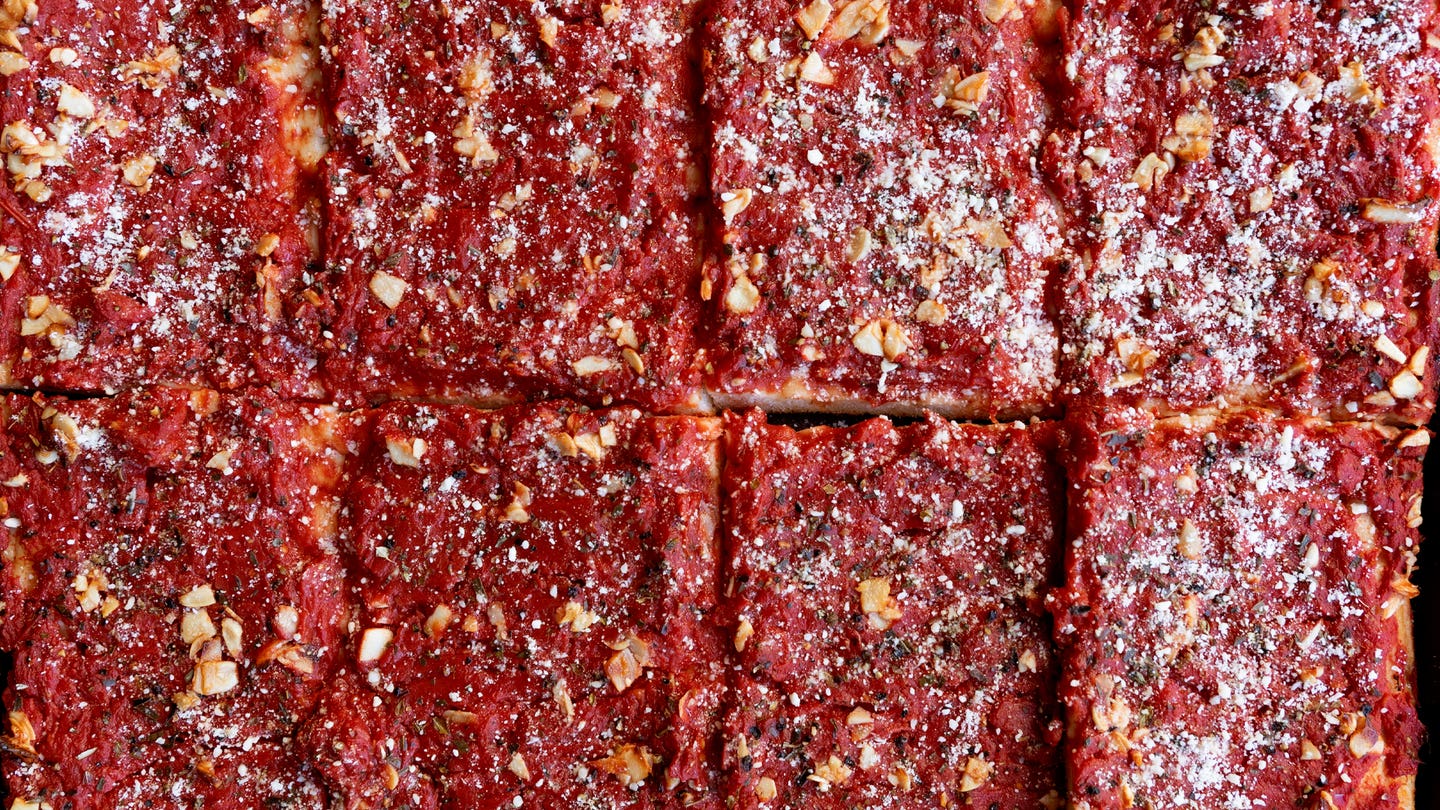Scandinavian Brunch Is Ready for the Limelight
These chefs want to fill your breakfast plate with pickled herring, rye bread, and cod roe.
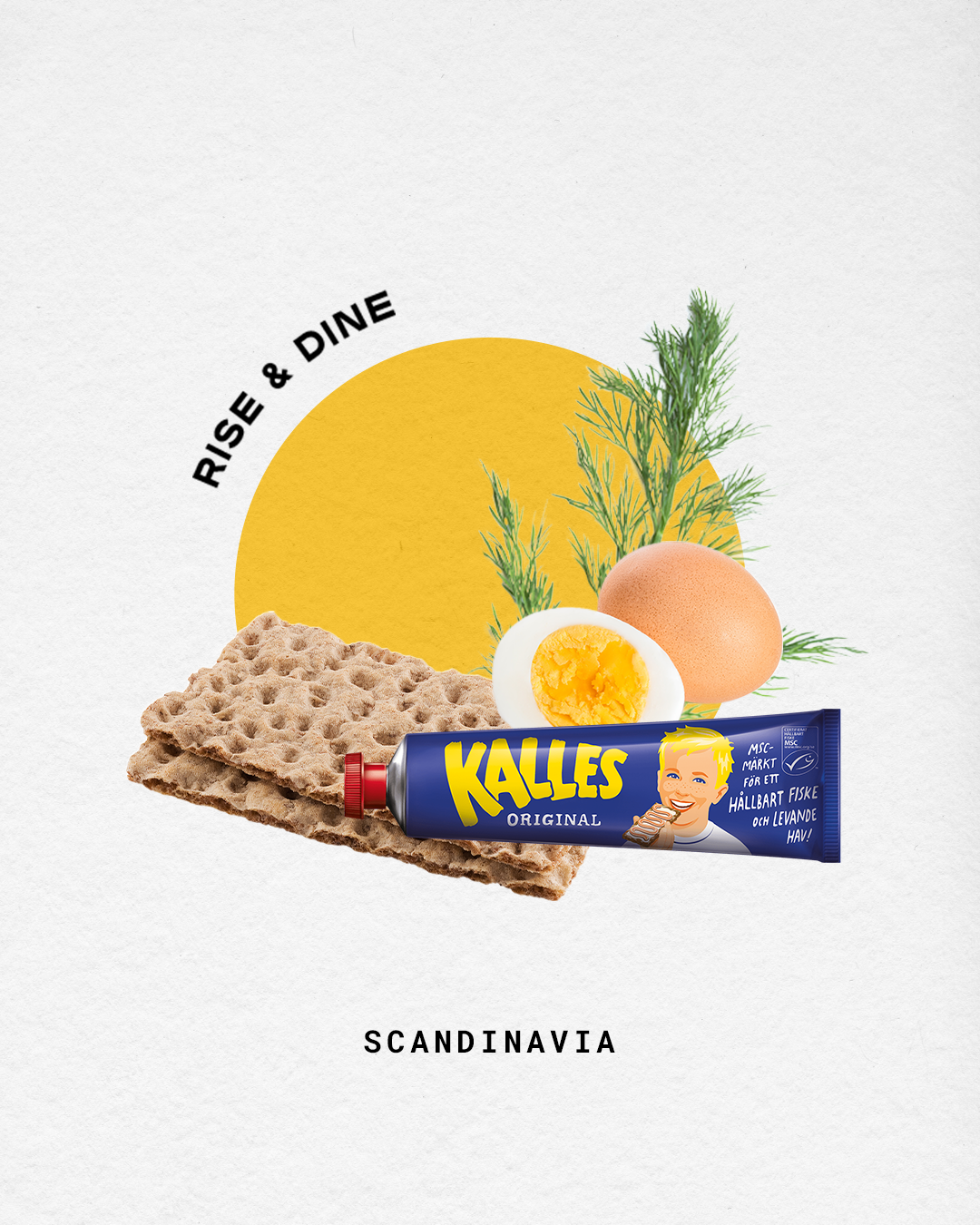
Rise & Dine is a SAVEUR column by Senior Editor Megan Zhang, an aspiring early riser who seeks to explore the culture of mornings and rituals of breakfast around the world.
At a new Scandinavian-inspired bakery in Manhattan’s East Village, a wall of staple provisions from canned fish to condiments beckons to customers as they place their coffee and pastry orders. Many of the products are imports from Northern Europe and a familiar sight for homesick Scandinavians. But Smør Bakery, like many businesses around the world, felt the pressure from supply chain hiccups this year. That’s why, for the first month after its late-summer opening, there was a very apparent gap in the lineup.
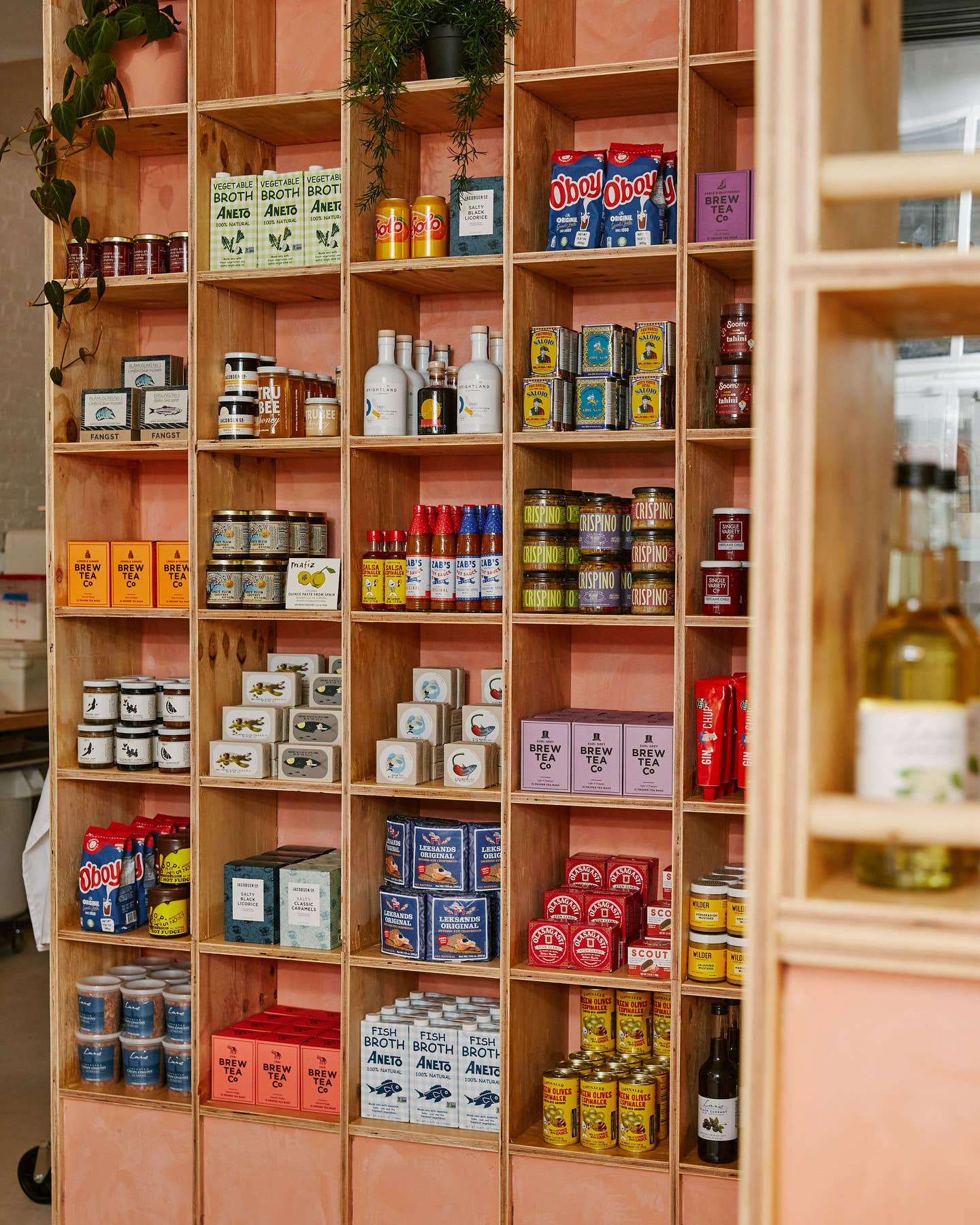
“In that month, we probably had countless people asking if we were going to carry [Kalles Kaviar],” says the bakery’s co-founder, Sebastian Perez, referring to a creamy pinkish condiment made from fish roe, salt, sugar, and tomato purée. “It’s something that, at least in Scandinavia, you grow up eating.”
Kalles Kaviar is an especially popular breakfast item in its origin country of Sweden. It’s one of many traditional toppings that commonly show up in Scandinavia’s open-faced sandwiches—known in Danish as smørrebrød, in Norwegian as smørbrød, and in Swedish as smörgås. Though favorite breads and toppings vary depending on the country, foods like cured meats, smoked fish, sliced cheese, eggs, and pickled vegetables are frequent brunch-time players. Families sitting down for a meal may pass plates of ingredients around the table so “people can pick and choose to their liking,” explains chef Nichole Accettola, owner of the Scandinavian brunch eatery Kantine in San Francisco.
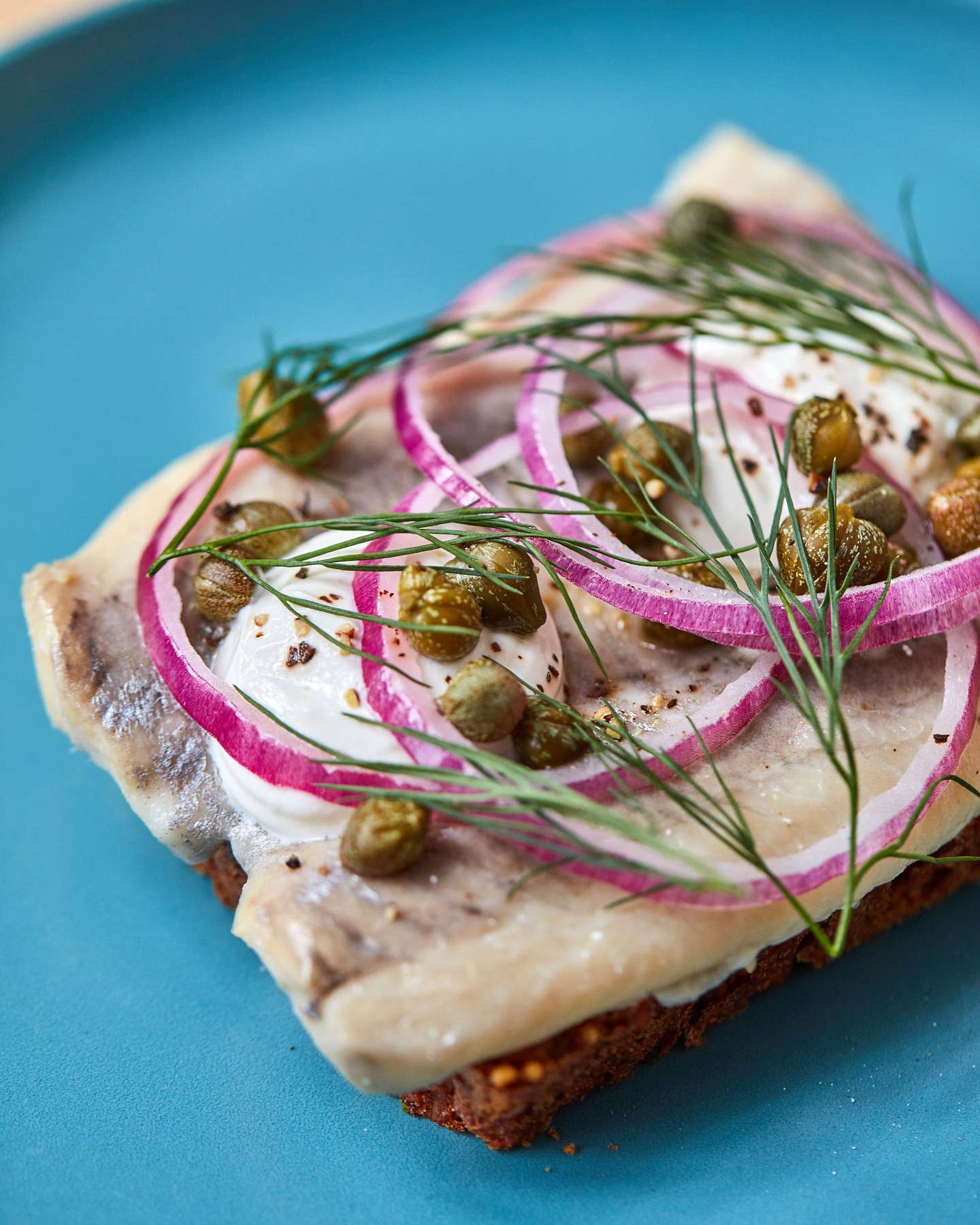
It was this casual, community-oriented approach to dining that inspired Perez and his co-founder Sebastian Bangsgaard to launch Smør Bakery and its sister restaurant Smør NYC, located two doors down. Perez points out that, while the past decade has seen Australia’s flat whites and smashed avo (better known as avocado toast in the U.S.) saturate New York City’s restaurant scene, Scandinavian brunch foods, especially savory, non-pastry items such as open-faced sandwiches, have not yet reached the same level of fame. Chefs like the team behind Smør are eager to change that—and to reframe Scandinavian cuisine’s reputation in the process.
“When people think Scandinavian food, they think fancy fine dining,” says Perez. He attributes the misconception in part to the outsized fame of Noma, the three-Michelin-starred Copenhagen establishment that has nabbed the coveted top spot in the World’s 50 Best Restaurants several times. “I think when you associate anything with a top restaurant, you kind of associate some formality to it,” he observes. But to Perez, the culture of dining in Scandinavia is not at all stuffy, but easygoing and unpretentious, with an emphasis on simple ingredients. “We wanted to create a more relaxed spot” that better represents homestyle foods, says Perez. To that end, Smør NYC’s menu offers an entire section of all-day smørrebrød, with typical Nordic toppings like pickled or curried herring. Many of Smør’s Scandinavian immigrant customers “are just yearning for these,” says Perez, “because they’re such an important part of life over there.”
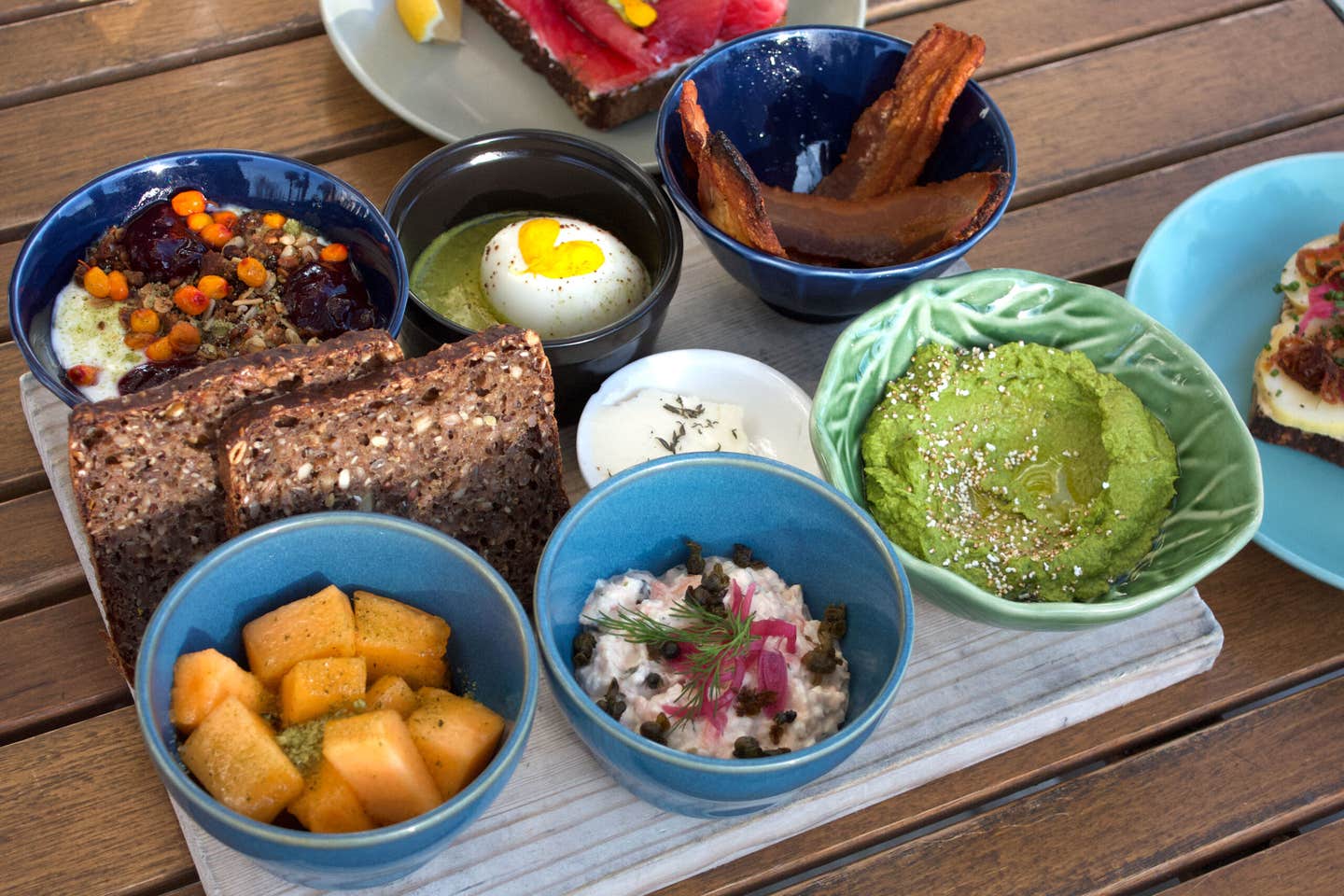
When Accettola opened Kantine in 2018, she, too, eschewed the high-end approach in favor of a casual concept celebrating the customizable open-faced sandwiches she frequently enjoyed during the 15 years she lived in Copenhagen. Those meals inspired her to develop a build-your-own brunch offering, from which diners can select breads like tunnbröd (Swedish flatbread) and toppings such as trout salad and Danish havarti cheese to make their own sandwiches. “You’re mixing and matching,” says Accettola, noting that a table of diners can share the different selections, the way it’s done in Scandinavian homes. “It’s an inclusive way of eating,” she says.
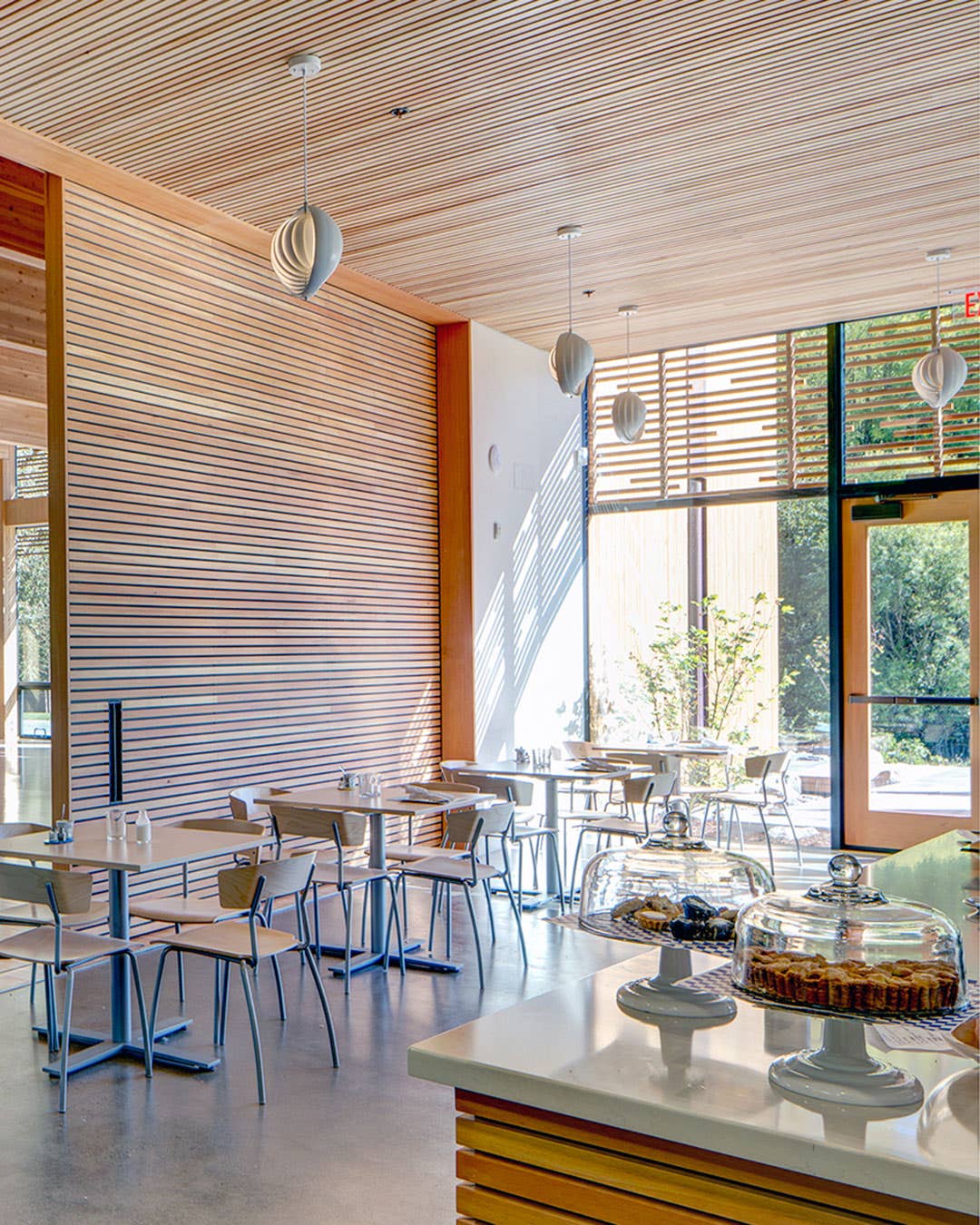
Perez hypothesizes that one explanation for the slow adoption of Scandinavian brunch in the U.S. (aside from pastries and coffee) is that many of the more commonplace savory ingredients are objectively unusual to Americans. The brand behind Kalles Kaviar itself pokes fun at the condiment’s divisive punchy flavor in a self-deprecating commercial depicting repulsed Americans trying the spread for the first time. Scandinavian cafe culture is also “not as focused on sweet items” as Americans may expect at breakfast time, observes Casey Currier, operations and events manager of the restaurant group behind the brunch-focused Nordic-style eateries Broder Café, Broder Nord, Broder Söder, and Broder Øst in Portland, Oregon. “We're using ingredients that people here in America, especially, probably associate more with dinner.”
But now, it would appear the stage is set for Scandinavian-style brunch to finally enter the American spotlight in a big way. “A lot of folks here in America are getting in touch with their Scandinavian heritage and roots,” says Currier, noting that many people may be looking to experience dishes they recall their grandparents or extended relatives making. Moreover, the Nordic countries’ consistently high rankings in the World Happiness Report have attracted much attention to Scandinavian ways of life. One obvious example is hygge, a Danish concept often described as a sense of coziness, and which The Little Book of Hygge author Meik Wiking calls “a feeling of home.” Similarly captivating to Americans is the Swedish tradition of fika, a custom of allocating time in the day to enjoy coffee with friends, family, or colleagues, free from stresses and distractions. “Fika isn’t just for having an afternoon pick-me-up; it’s for appreciating slow living,” write Anna Brones and Johanna Kindvall in their book Fika: The Art of The Swedish Coffee Break.
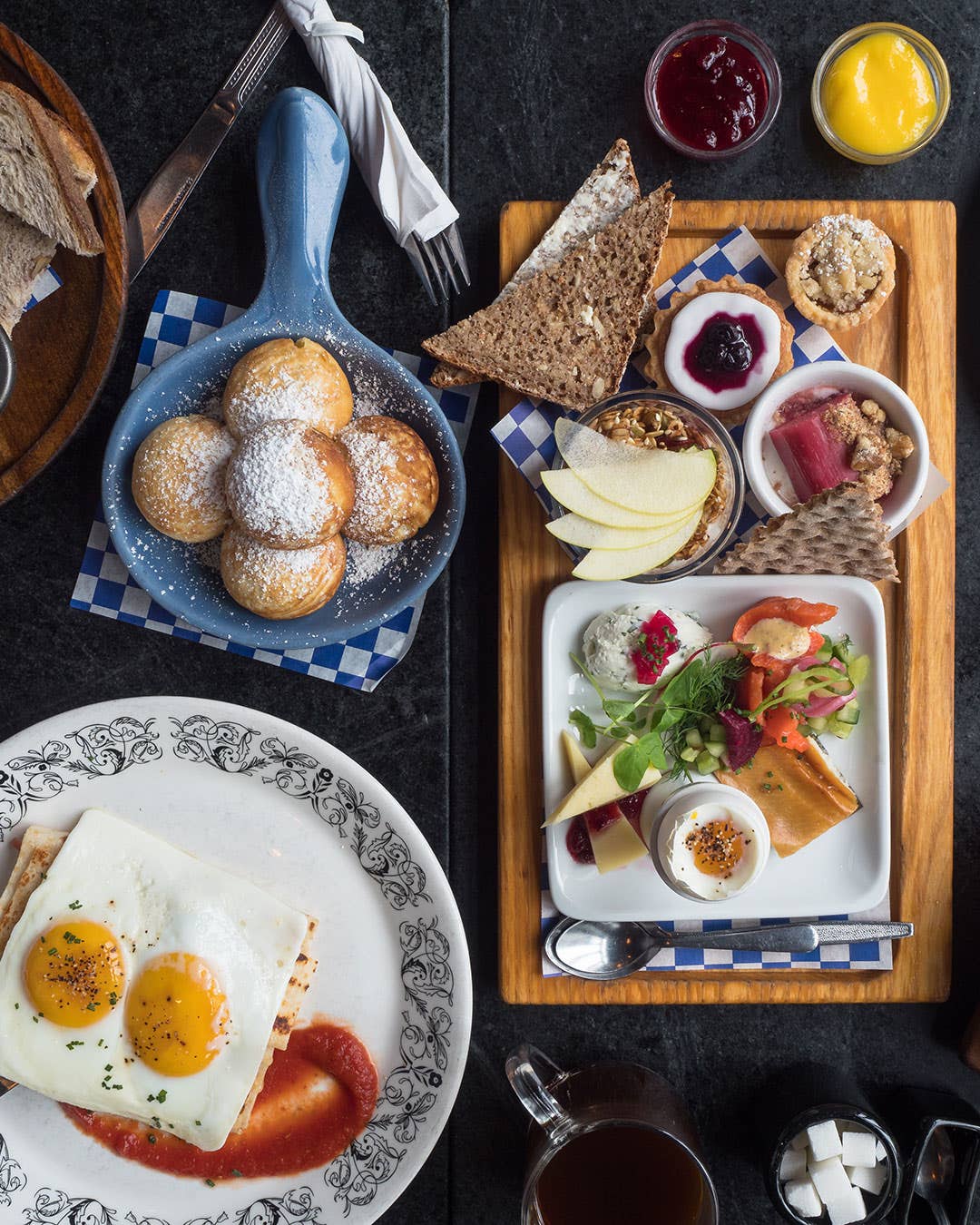
That pursuit of cozy, casual refinement which has intrigued many Americans permeates the Scandinavian brunch table. The act of passing food around a table emphasizes community and togetherness. The food itself, like in the case of open-faced sandwiches, also tends to consist of lighter fare, making it more conducive to chatting, says Aaron Franco, the chef at Broder Söder. “You can be kind of dainty and pick at your food while you’re conversing,” he says. A lot of the foods that are popular for brunch are also easy to prepare and don’t call for much fussing; many bread toppings, like cured meats and condiments, are ready to eat. But, however simple the ingredients may be, the way they balance each other is key, especially when stronger flavors are involved. “You’re eating pickled herring, but it’s going to go with something that complements it,” adds Franco, whose mother grew up in a Swedish household with traditional foods like Kalles Kaviar. When Swedes enjoy cod roe spread, he explains, they often eat it on bread with other toppings or mix it into salads. This way, “you don’t get the salinity and the fishiness all at once,” he says. Each bite ends up being a harmonious marriage of flavors and textures—from just a handful of humble ingredients.
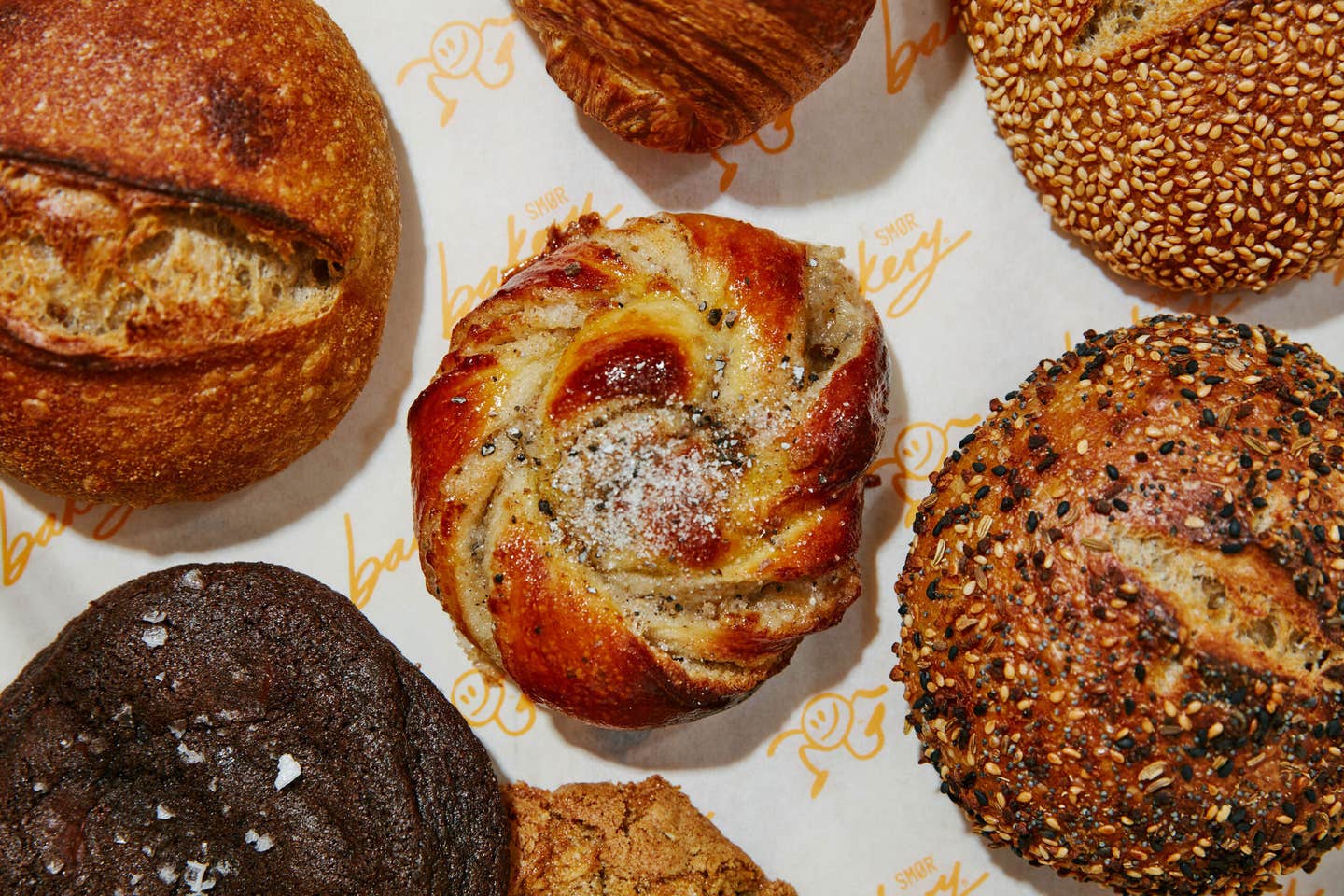
Whether it’s the growing interest in Nordic lifestyles or the increasing dialogue around the need for better work-life balance, American diners seem poised to embrace Scandinavian brunch—and bread adorned with delicious toppings could be a perfect entry point. “You have this endless realm of possibilities for building these open-faced sandwiches,” says Perez, who hopes Smør will encourage diners to make the food their own. “I would love for us to be a catalyst for that.”
Recipe
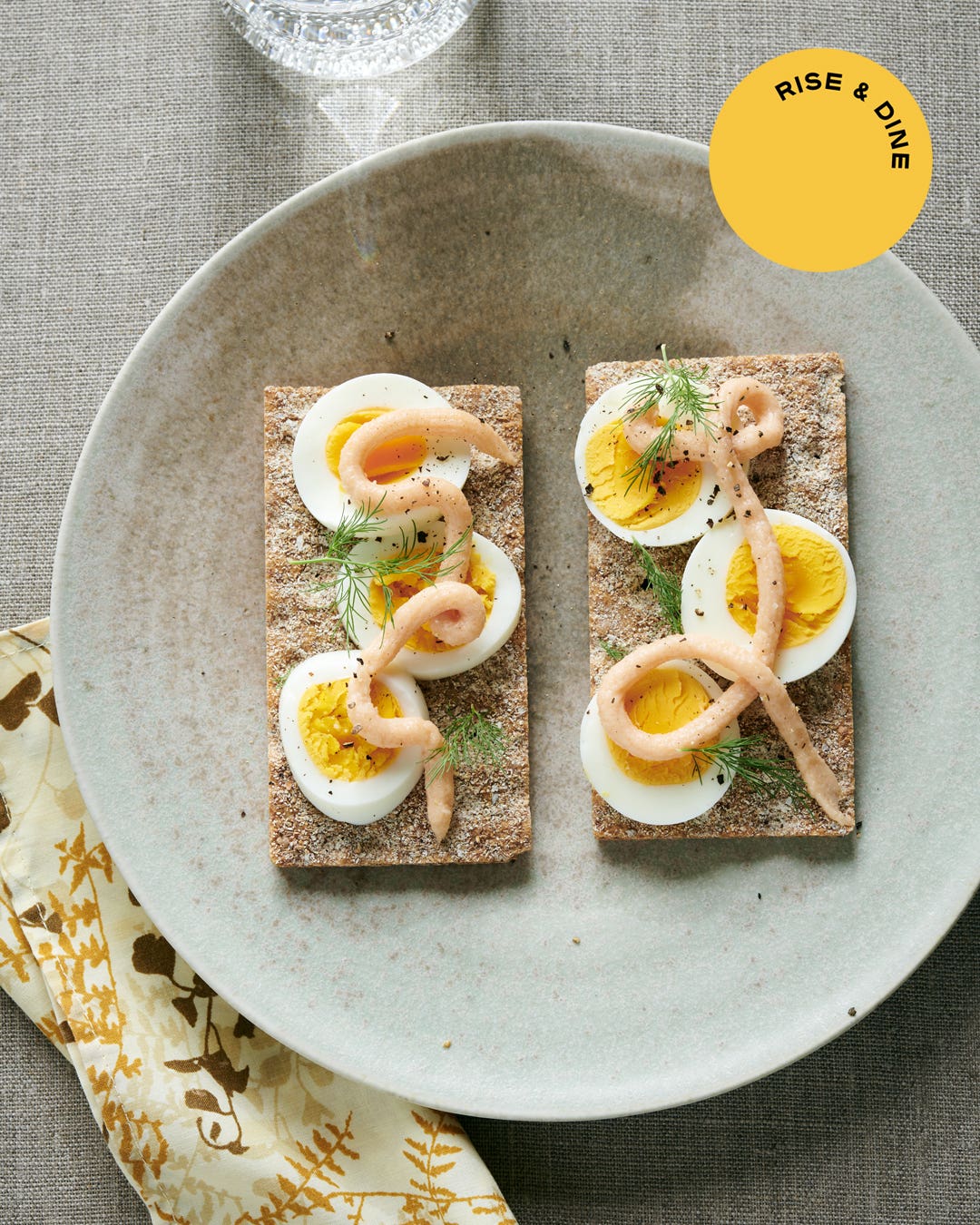
Keep Reading
Continue to Next Story









